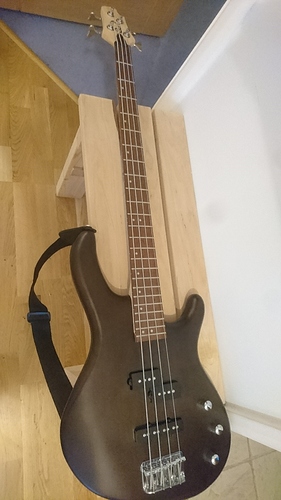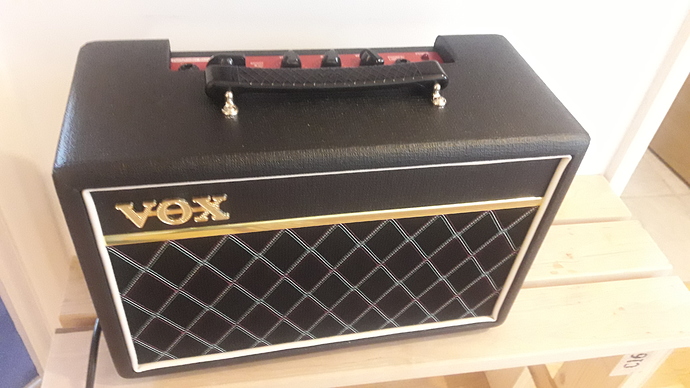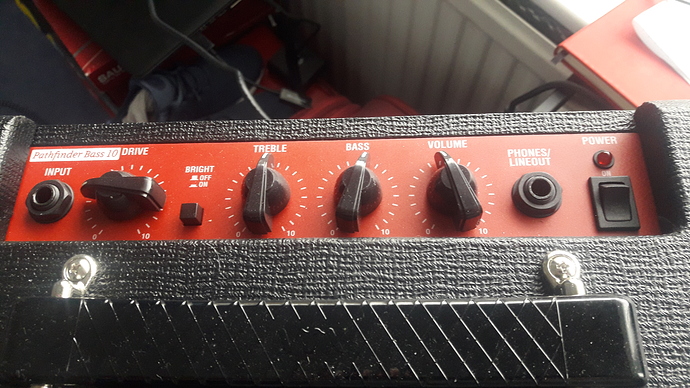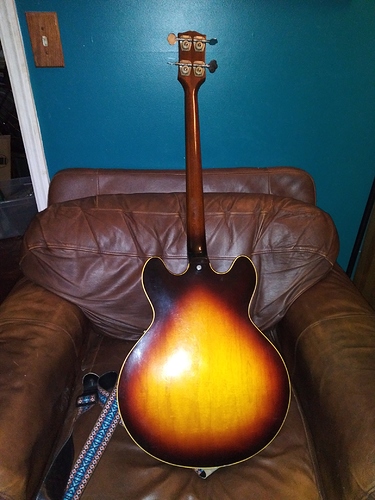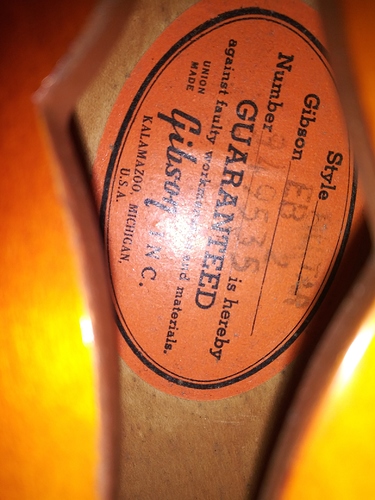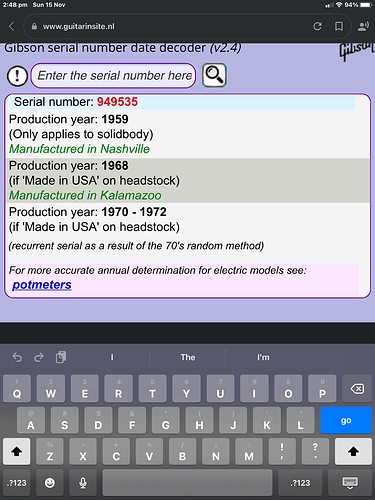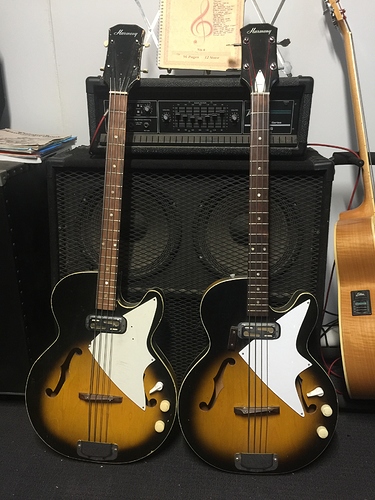It’s a beauty.
Results of serial number search below.
In the mid 1950s, Gibson president Ted McCarty was paying close attention to two new instruments impacting the musical-instruments market – the solidbody electric guitar and the electric bass. Both had been developed by an upstart company called Fender, and Gibson’s original solidbodies, the Les Paul guitar and Electric Bass ( VG , February ’06) were introduced after Fender’s goods had shaken up the scene.
Because the staid Kalamazoo company’s new products didn’t noticeably excite the market, McCarty wanted Gibson’s next series to be as innovative as some of the models purveyed by Fender. In early ’58, Gibson introduced a line of semi-hollow “thinline” guitars McCarty would call his proudest achievement in instrument design.
The thinline series had double-Venetian-cutaway silhouette, two f-shaped holes, and measured 16″ wide by only 15/8″ deep. All except the lowest-priced guitar had a block of mahogany running lengthwise through their center, from the neck juncture to the end pin (the ES-330 was fully hollow). The idea of the semi-hollow design was to evoke stronger resonance, like a solidbody electric guitar, but the hollow portions of the body reduced the harshness, and also reduced the weight.
The keystone instrument in Gibson’s new series was the ES-335TD. Its counterpart bass was the EB-2, which sported the same body and finishes, but had unbound f holes. Like the original Electric Bass, the EB-2’s headstock had rear-projecting/banjo-type tuners and a set neck made of Honduras mahogany, with 20 frets on a rosewood fingerboard and pearl dot inlays. It joined the body at the 18th fret, and its combination bridge/tailpiece was angled, which increased the accuracy of its intonation (if only in theory!).
Also like the Electric Bass, the EB-2 had one large pickup (with adjustable polepieces) mounted near the neck joint. According to the catalog (printed in ’58) that introduced the model, it was encased in an ebony “Royalite” cover, but some early EB-2s had a brown cover, which had been standard on the Electric Bass. Its controls were simple Volume and Tone knobs.
The catalog heralded the EB-2 and Electric Bass (now dubbed EB-1) as “a revelation in rhythm.” The new model received top billing and was promoted as “the ideal companion for the new ES-335T guitar.” Prices were listed at $282.50 for the EB-2N (natural finish), $267.50 for the EB-2 (sunburst finish), and $49.50 for a Faultless plush-lined case.
Changes were already in the offing for the EB-2 the very next year, as the model received a pushbutton tone switch.
“The EB-2 offers great facility and handling ease for all string bass effects,” the catalog trumpeted. “Tremendous sustain and tremolo, fast plucking and slap bass. It even adds a baritone voice with its new Vari-tone switch, which operates easily and quickly to provide two entirely different tonal characteristics.”
The natural-finish instrument shown here dates from ’59, a first-year example of a baritone switch-equipped EB-2. Several black EB-2s were built that year, and some Cherry-finish examples were built in March of ’60. By the turn of the decade, the model also had a string mute on its bridge.
In spite of its innovative design, the EB-2 didn’t set the world on fire, sales-wise, and after changes such as Kluson tuners were introduced in late 1960, the model was discontinued in ’61, only to be resurrected in ’64, as the fabled “guitar boom” began. Moreover, its Epiphone twin, the EB232 Rivoli ( VG , March ’09) was heard on probably more recordings by British Invasion bands than was the EB-2.
In late ’65, Cherry became a second standard finish for the model, and ’66 saw the introduction of the EB-2D, which had the original large pickup plus a smaller one near the bridge like the EB-3 of the era. Unlike the EB-3, which had a four-position rotary pickup-control switch, the EB-2D’s controls were similar to most two-pickup guitars, with a Volume and Tone knob for each pickup and a three-way pickup toggle. The Baritone switch was also a standard feature on the EB-2D, as seen on this ’67 sunburst example (note the slide tab for the string mute at the bridge).
In the late ’60s, both basses were available in Walnut or Sparkling Burgundy finishes, and like other Gibsons, were fitted with three-piece mahogany necks.
The early ’70s marked the beginning of a decline in the quality and design of Gibson instruments. The EB-2 and EB-2D were discontinued in ’72, and perhaps it’s fortunate that those models escaped most of those times. Moreover, they are arguably the most innovative basses ever introduced by Gibson.
And value wise they are well up there amongst the mid- thousands
![]()
